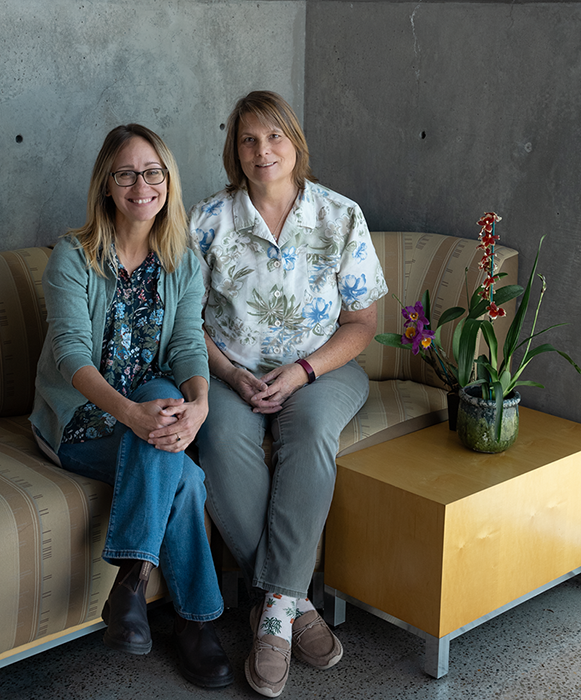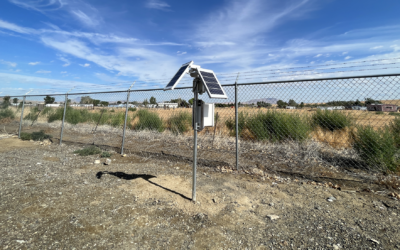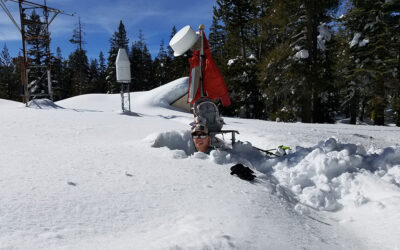DRI scientists are starting the first ever effort dedicated to studying and conserving Nevada’s orchids.
Many people know orchids as flashy, delicate flowers raised in lush greenhouses, but orchids also thrive in the sparse wetlands sprinkled around Nevada’s arid landscape. In fact, lovers of the state’s orchids like to tout one impressive statistic: Nevada has no less than 14 species of native orchids, in contrast with Hawaii’s mere three. Despite this rich botanical heritage, very little research has been conducted on the state’s orchid species, and many could soon be threatened by both climate change and the statewide boom in lithium exploration and mining. In fact, more than half of North America’s native orchid species are considered endangered or threatened in part of their range. To help conserve these plants, DRI scientists are launching a program focused on their conservation.
“Orchids are like the charismatic megafauna of plants; they’re the charismatic megaflora,” said Connie Taylor, MA., DRI program administrator in the Division of Earth and Ecosystem Sciences. “And you try to have them at home and they’re so beautiful, and then they die. So, there’s this elusive, sort of wild quality to them–and this beauty involved as well.”

A Labor of Love
Taylor’s initial idea for the project came after listening to a podcast with Lawrence W. Zettler, Ph.D., Director of the Orchid Recovery Program at Illinois College and research associate at the Chicago Botanic Garden. In the interview, Zettler speaks about his efforts to conserve the rare ghost orchid and how climate change is impacting orchids worldwide.
“I emailed Dr. Zettler right after I heard the podcast and said that I was interested in trying to see if we could do something like this with Nevada orchids,” Taylor said. “By the time I drove from my house to my office, he had looked me up and left a message on my phone.”
After speaking with Zettler, Taylor knew that the project was one that she could tackle, but she still needed one critical thing: funding.
“For a few months, I hesitated,” Taylor said. “And then I thought, ‘What’s stopping me? Nothing’s stopping me.’”
She recruited botany and ecology experts Amy Langston, Ph.D., and Tiffany Pereira, M.S., to the project, while Alison Murray, Ph.D., agreed to provide space in her lab. Using weekends, their vacation time, and a small grant from the “Janet Frandsen Family Trust” (Taylor’s mom), the project launched this summer when Taylor and Langston visited Zettler at the Chicago Botanic Garden and Illinois College.
Zettler spent a weekend showing them around his greenhouses and labs, demonstrating how to culture and identify the soil fungus required for a particular orchid to grow, and discussing orchid collection protocols. Nevada’s orchids aren’t the simplest plants to collect and propagate, because they spend much of their lives hidden underground before briefly blooming. All orchids also require special fungi that team up with a plant’s roots to provide moisture and nutrients in exchange for sugars. For these reasons, the time that Taylor and Langston spent in Illinois was critical for understanding how to study and grow Nevada orchids without having a negative impact on their wild populations. For now, they are carefully practicing these techniques in preparation for next year, when they’ll begin searching Nevada’s bogs and wetlands for the plants. With so little existing research on the state’s orchids, they’ll have to identify where each species grows and when it blooms–perhaps with a little help from DRI scientist Mary Cablk, Ph.D., and her retired search and rescue dogs.




Right: Culturing mycorrhizal fungi in a petri dish.
The Last Frontier
For those who love and study plants, Nevada is considered “the last frontier in North America.” At least, that’s according to Jerry Tiehm, who runs UNR’s herbarium and has studied the state’s species for half a century. Vast expanses of desert envelop the wetlands and springs where orchids thrive, and with fleeting opportunities to catch them in bloom, it’s perhaps not surprising that many of their populations remain unknown.
But Nevada’s wetlands hold something else that is rapidly being uncovered: lithium.
A naturally occurring metal needed for electric car batteries, lithium is found in deep, briny waters of underground aquifers or the clay deposited at the basins of ancient lakes. And Nevada is the center of the lithium rush, ushering in a new era of mining in the West that recalls the silver and gold rushes of centuries past. According to the Nevada Division of Minerals, there were more than twenty thousand lithium claims across the state as of September 2023. But with lithium tied to the groundwater that supports the same wetlands where orchids can thrive, the plants are on a collision course with the energy transition.
“A lot of these orchids may grow where lithium is going to be mined,” Taylor says. “So, I didn’t want to wait another year to get this project off the ground.”
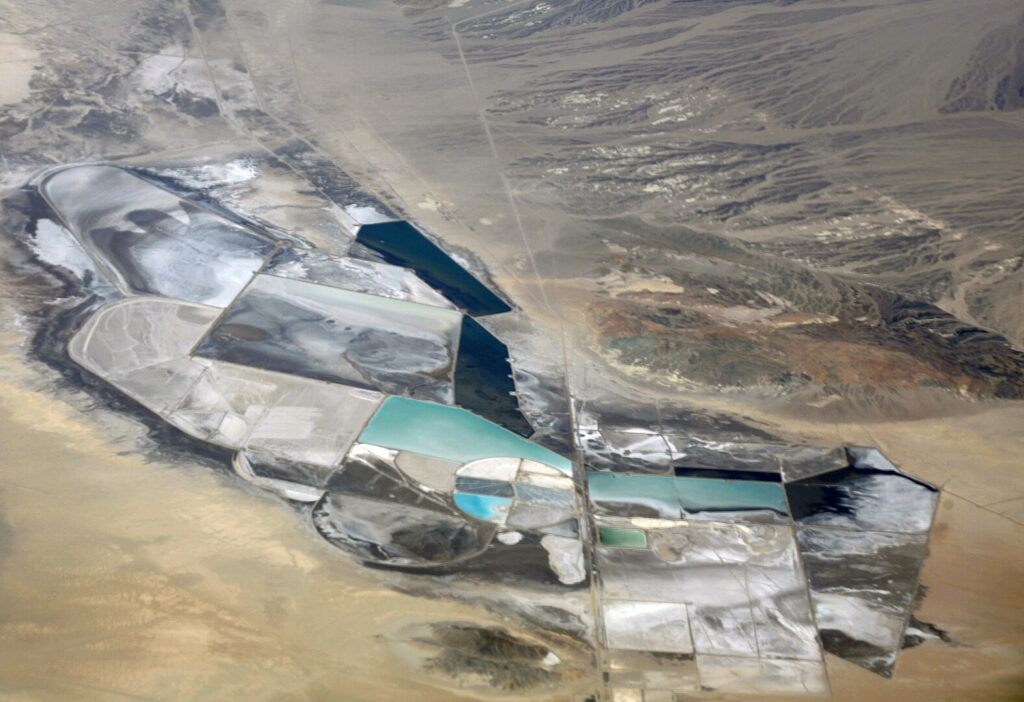
Lithium isn’t the only threat to consider, as a warming climate rapidly changes the conditions that plants evolved to withstand. For the DRI Orchid Team, this could also provide an opportunity: Nevada’s orchids may already be hardier than their counterparts located in gentler climates. If true, they could prove valuable to conserving their species if scientists can propagate and plant them in areas where populations are disappearing. Known as “assisted migration,” the tactic is being utilized and studied as one way to help species adapt to a changing world. It’s a nuanced strategy requiring a thorough understanding of what the species needs to thrive, from weather and soil conditions, to predators, to pollinators.
Indicator Species
Anyone who’s ever grown orchids as houseplants knows they can be tricky to care for, and the effort is more complicated when the plants are wild and their needs unknown. By studying their growing conditions in the lab as well as in their native habitat, the Orchid Team expects to discover information about their delicate ecosystems.
“One of the reasons I like orchids is because if you can grow orchids and learn enough about the environment to successfully plant them, then you really know a lot about that place,” Taylor says.
In this way, orchids can be used as what ecologists refer to as “indicator species” that can tell scientists a lot about the health of their ecosystem.
“We’re excited about the ecosystem-wide benefits of this conservation program,” Langston says. “Our efforts to conserve Nevada orchids will also inform ways to promote long-term ecological resilience in wetlands where they grow.
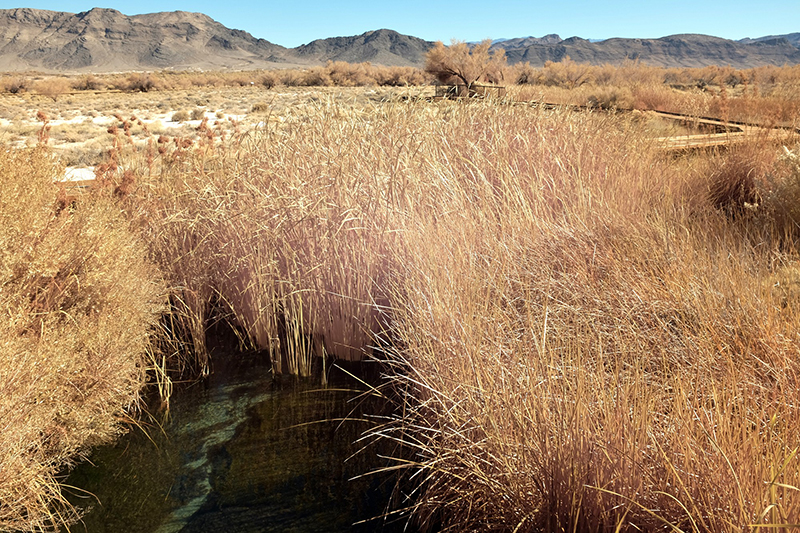
Fortunately, the team won’t have to start entirely from scratch when attempting to get their growing conditions just right. They’ve been working with partners at the Smithsonian’s North American Orchid Conservation Center, where orchid seeds and their symbiotic fungi are banked in an archive for researchers to use and refer to. The team hopes to use the archive to identify the fungus strains that pair with Nevada’s orchids.
Of course, the amount of time that Taylor, Langston, and Pereira can dedicate to the project will depend on future funding efforts. Grants for researching plants can be scarce compared to other fields of study, but Taylor is confident that the team will convince funding agencies of the importance of the work. The project could help illuminate not only the status of the state’s orchids, but wetland ecosystems across Nevada and the impacts of climate change and lithium mining on biodiversity. For now, the team hopes that starting to shine some light on these mysterious plants will simply help people care about what happens to them in the future.
“There are so many unknowns–no one even thinks of Nevada as having orchids,” Taylor says. “And we don’t care about things we don’t know about.”
